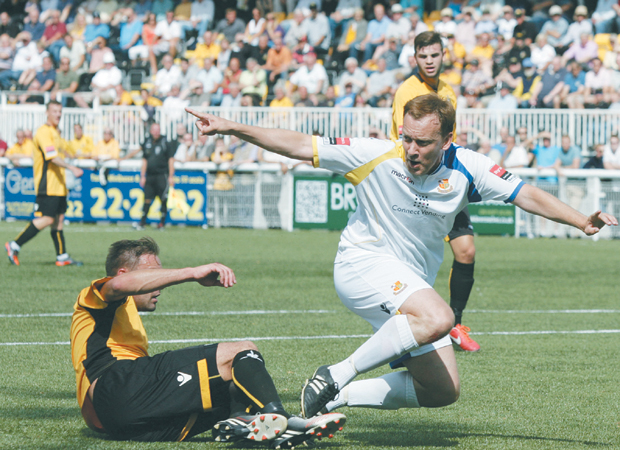MAIDSTONE UNITED co-owner Oliver Ash think it’s time Non-League clubs are more transparent – and has released the Stones’ income figures to The NLP to prove it.
The Ryman Premier club are experiencing a new lease of life after ending their 24-year exile from their Kent hometown last season.
Their first year at the new Gallagher Stadium – complete with 3G pitch – was a big success, with an average home attendance of 1,698 and promotion through the Ryman South play-offs.
Life is good off the pitch too as is shown in these numbers revealed today.
Maidstone United’s overall business model – which includes the football club, academy, clubhouse, 3G pitch hire and car park revenue – had a first year turnover of £1.1m.

The club enjoyed a profit of £180,000 after depreciation (£260,000 before) and Ash, who took over the club with Terry Casey In 2010, wants his club to take the lead by putting their numbers out in the open.
Ash told The NLP: “We’re very satisfied with year one in the new stadium; trading profitably will, over time, help to reduce the loans which financed the construction and enable us to progress sustainably on and off the field. This is a priority for our long-suffering supporters.
“Generally football clubs at whatever level, unless they are PLCs, are reluctant to reveal their financial situation either because there are things not 100 per cent clear in their finances or because they don’t look very good, with too much debt building up. That’s a danger sign.
“We’ve got absolutely nothing to hide and we don’t see why football clubs shouldn’t have to be completely open about their finances.

“It’s a subject that fascinates everyone in the game because you want to understand how clubs are operating and in some cases how they survive. It has to be of interest to the people who run the leagues, other clubs and supporters to know more and be able to ask questions early if the numbers look bad.”
Rental of their 3G pitch has brought in £110,000 of direct income – with the club estimating £50,000-£100,000 of additional revenue is in the accounts as an indirect impact of the 3G business model.
“The fact we have 1,000 players a week playing on the pitch and using the clubhouse means more people feeling attached to our club, more customers coming along to watch the first team, reserves or Academy team,” Ash said.
“It means more people who will come along to events in the clubhouse and hire rooms at the club for functions. The 3G pitch has enabled us to develop from a simple football club, holding one event a fortnight, into a multi-activity sport and social club, open virtually round the clock, providing a family-friendly home-from-home to thousands of local people.
“It’s a win-win situation because getting the local community down in numbers enjoying their club’s facilities brings in so many commercial benefits.
“For clubs at all levels if you say you can generate an extra £150,000 by installing a 3G pitch it’s not difficult to imagine the potential positive impact.”
























All well and good when you’ve got an astronomical attendance relative to the level of football you’re at. And when you have decent non-matchday income generation and a turnover of £1.1m.
Wonder would he be so keen at a club with gates of 450 in a rundown stadium who have to scrape together every penny and not scare off creditors?